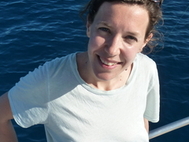
First assessment of the spearfishing impact in the Canary Islands
An onsite survey was conducted between June and December 2017 to characterize recreational spearfishing in the Canary Islands. This activity takes place throughout the entire year with higher catches in the summer and autumn months. The total estimated effort in 2017 was 658,798 fishing journeys; 34.5% of these journeys had no captures. The average catch per fisherman was 0.654 kg/h. It has been estimated that recreational spearfishing lands were approximately 480.8 t per year throughout the entire archipelago (not including non-resident fishermen). The discards were less than 10%, but in several cases they exceeded 25%. Fishermen make an average initial investment of €484.4 in fishing equipment and have an average annual expenditure of €245.14 for travel, maintenance, equipment replacement, insurance and a fishing license. In 2017, spearfishing mobilized €9.9 million only on travel and subsistence. The majority of fishermen estimate that 78.3% of the fishing areas that they visit are moderately degraded or highly degraded and that fishing resources have decreased by 25%–60% or more since they began to participate in this activity. They also indicated that the abundance and the average length of the target species increases with depth. It is noteworthy that 66.7% of the main target species have a high or very high intrinsic vulnerability index. However, spearfishermen do not assume responsibility for the possible deterioration of the permitted underwater fishing areas, and further evaluation is needed to assess the impact of all fishing activities conducted in these areas.






